
Nuxia floribunda, the forest elder, forest nuxia or wild elder, is a species of tree in the Stilbaceae family, that is native to moist regions of southern Africa, East Africa and central tropical Africa.

Lumnitzera is an Indo-West Pacific mangrove genus in the family Combretaceae. An English common name is black mangrove. Lumnitzera, named after the German botanist, Stephan Lumnitzer (1750-1806), occurs in mangroves from East Africa to the Western Pacific, and northern Australia.
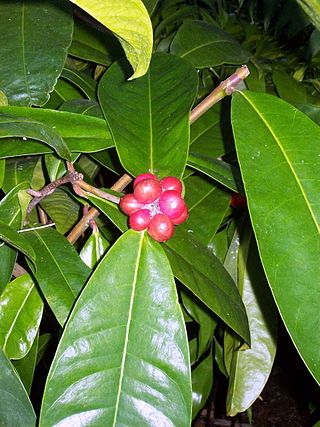
Phaleria octandra is a flowering plant in the Thymelaeaceae family. It is a shrub found in tropical Australia. It is also naturally found in the New Guinea, Indonesia, Malaysia and the Solomon Islands.
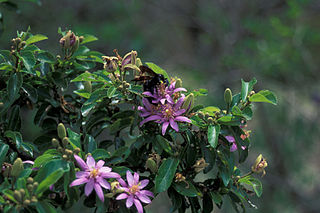
Grewia occidentalis, the crossberry, is a species of deciduous tree indigenous to Southern Africa.

Euphorbia cooperi is a flowering plant in the Euphorbiaceae family. It is commonly called Transvaal candelabra tree or bushveld candelabra euphorbia, and is found in South Africa.

Schleichera is a monotypic genus of plants in the soapberry family, Sapindaceae. There is only one species, Schleichera oleosa, a tree that occurs in the Indian Subcontinent and Southeast Asia.
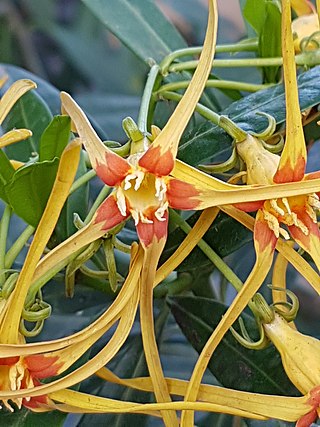
Strophanthus speciosus, commonly known as the forest poison rope, is a tree, shrub or woody climber which is native to southern Africa.
Schizozygia is a monotypic genus of plant in the family Apocynaceae found in tropical Africa and the Comoros. As of July 2020, Plants of the World Online recognises the single species Schizozygia coffaeoides.

Dillenia alata, commonly known as red beech, golden guinea flower or golden guinea tree, is a tree in the Dilleniaceae family, found in tropical forests of the Moluccas, New Guinea, and northern Australia.

Schrebera alata is a plant in the family Oleaceae. It grows as a tree up to 15 m (50 ft) tall. The specific epithet alata is from the Latin meaning "winged", referring to the petioles. Its habitat is forests and woodland from 1,000–1,800 m (3,000–6,000 ft) altitude. Schrebera alata is native Ethiopia, the Democratic Republic of the Congo, Uganda, Rwanda, Burundi, Kenya, Tanzania, Angola, Zambia, Zimbabwe, Malawi, Mozambique, Eswatini and South Africa.
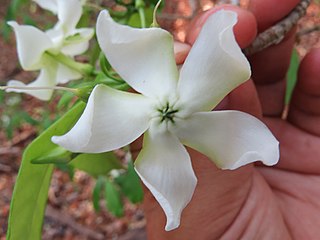
Tabernaemontana amygdalifolia is a species of plant in the family Apocynaceae. It is native to southern Mexico, Central America, Cuba, Haiti, and northwestern South America.
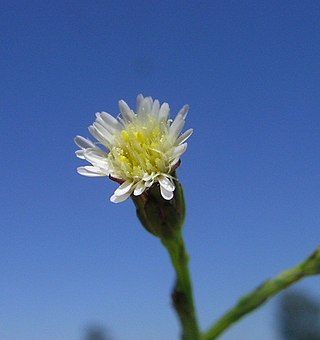
Symphyotrichum subulatum, commonly known as eastern annual saltmarsh aster or, in Britain and Ireland where it is naturalized, annual saltmarsh aster, is an annual plant in the family Asteraceae native to the eastern United States and the Gulf Coast to Texas. The species grows primarily in coastal salt marshes, although in the Ozarks it occurs as a non-marine weedy variety.

Markhamia obtusifolia is a species of plant in the family Bignoniaceae. It is found in Southern Africa.

Markhamia zanzibarica, also known as bell bean tree or maroon bell-bean, is a species of plant in the family Bignoniaceae. It is found in East Africa and Southern Africa, from Kenya to South Africa.

Aconitum firmum is a species of monkshood that is found in Southern Poland, Slovakia, and Czechia, with a few instances in Ukraine and Romania.

Protea convexa, also known as large-leaf sugarbush, is a rare flowering shrub in the genus Protea of the family Proteaceae, which is endemic to the southwestern Cape Region of South Africa.
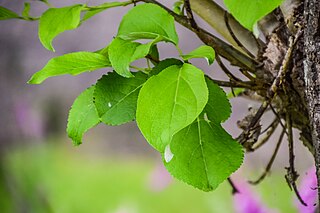
Populus suaveolens, called the Mongolian poplar, Korean poplar and Japanese poplar, is a species of flowering plant in the genus Populus, native to all of northern Asia, the Korean peninsula, the Kurils, and northern Japan. It is a tree reaching 30 m.
Zanthoxylum myriacanthum is a woody plant from the family Rutaceae.

Erica caffra is a small tree, sometimes a shrub, that grows in riparian habitats and on forest edges and occurs from the Western Cape to the Drakensberg of KwaZulu-Natal and Lesotho. The tree's flowers look like bells. The tree's national tree number is 572.
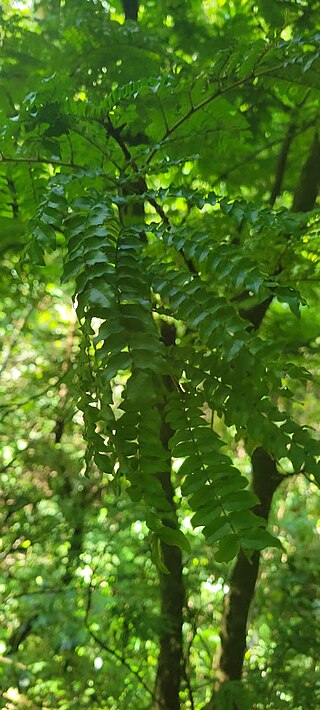
Cojoba costaricensis is a species in the Cojoba genus in the family Fabaceae. The native range of this species is Nicaragua to Panama. It is a tree and grows primarily in the wet tropical biome. Occurs commonly in mature forest at 1400-1600m in Costa Rica, especially in Monteverde. 5-15m tall subcanopy tree, with doubly compound fern-like leaves. There are tiny extrafloral nectar glands between each pair of leaflets. Cojoba costaricensis does not close its leaves at night in nyctinistic movement like other legumes.


















